yoga
Top ten basic exercises you can do easily
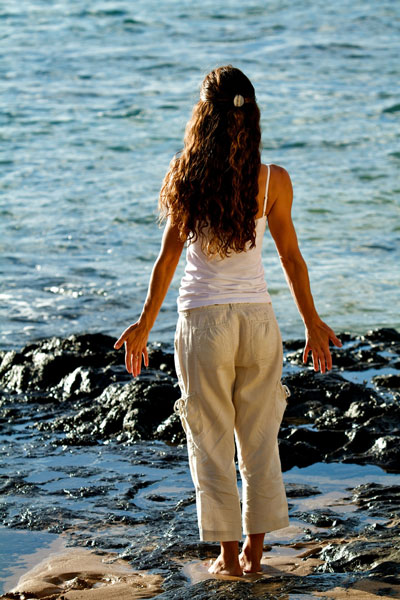 Yoga
is a general term referring to the physical, mental and spiritual
exercises that originated in ancient India with the aim of achieving a
state of lasting peace. There are many reasons to add yoga to your daily exercises. Vloga improves muscle strength and achieves flexibility and balance, as it helps to relax and reduce stress. Some studies have shown that yoga can reduce the symptoms of
depression, anxiety and chronic pain more than conventional therapy
alone.
Yoga
is a general term referring to the physical, mental and spiritual
exercises that originated in ancient India with the aim of achieving a
state of lasting peace. There are many reasons to add yoga to your daily exercises. Vloga improves muscle strength and achieves flexibility and balance, as it helps to relax and reduce stress. Some studies have shown that yoga can reduce the symptoms of
depression, anxiety and chronic pain more than conventional therapy
alone.
So we offer you the top ten basic situations you start practicing yoga. And to know that their mastery helps to strengthen and stretch muscles and increase the flexibility of the body and improve the psychological and physical condition and avoid injuries during training.First Exercise: Mountain Pose
Exploring-a-Foundational-Yoga-Pose-Tadasana-Mountain-Pose
In Sanskrit (an ancient Indian language) claims "Tadasana", a situation in which mountains are simulated by being frozen and fixed. This is the main situation you should start with.
How do you do it?
Stand alone and relax your shoulders, distribute your weight evenly on your feet, leave your hands relaxed next to you.
Take a deep breath and lift your hands up with your hands facing each other
Lift your fingers as high as possible.
Exercise 2 - Downward Dog Status
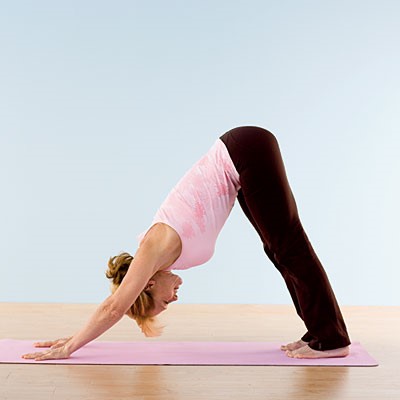 adho mukha svanasana
adho mukha svanasana
The low status of the dog or "adho mukha svanasana" is one of the most famous yoga positions.
How do you do it?
Bend your body forward and lay your hands on the ground.
Move your hands forward so that you leave an appropriate distance between them and your feet - as shown in the figure - and then between the fingers of your hands, and press them firmly on the ground.
Fold your toes, then lift the buttocks up to form the body in the end as an inverted "v". Stretch shoulders from your ear.
Your feet should be slightly open and your knees slightly bent too.
Keep that position for three breaths - inspiration and exhalation - complete.
Exercise 3: Butterfly Mode
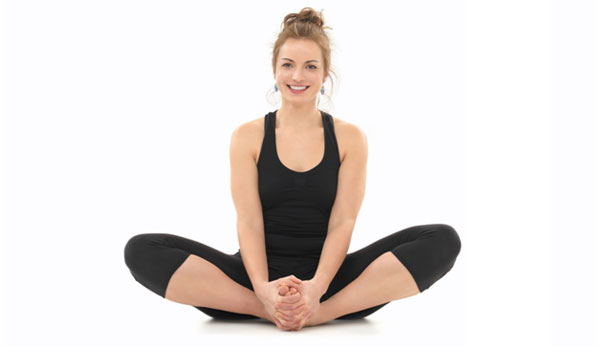 Baddha-Konasana-joqfit
Baddha-Konasana-joqfit
This position is known as the "butterfly position" because the movement of the legs while sitting is like a butterfly when flapping its wings, also called "Badha konasana" which means "shoe maker status" because the shoe makers in India sit like that session while working.
Both feet should be folded close to the pelvic area, and the hands should be clamped tightly on the feet as if they were tied together.
Exercise 4: Warrior position
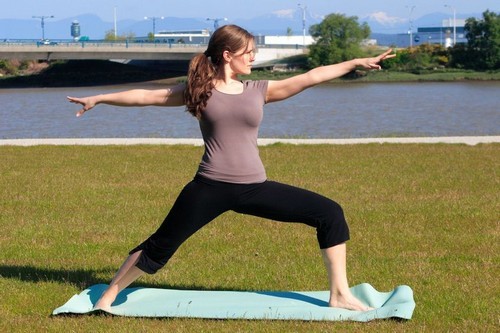 Virabhadrasana
Virabhadrasana
The initial warrior status or "Virabhadrasana" is the position of strength and concentration, and it aims to charge the body with the energy necessary for it.
How do you do it?
Stand on your feet and up between them at about 3 feet (30 cm). Turn your right foot 90 degrees and your left foot slightly.
Then lay your hand in front of you and the left behind you, with your palm down.
Keep your right knee up to 90 degrees. Keeping the position of the upper muscle directly, look at the extension of your right hand. Keep this position for one minute.
Repeat the above with the sides switch.
Exercise 5 - Bridge Pose
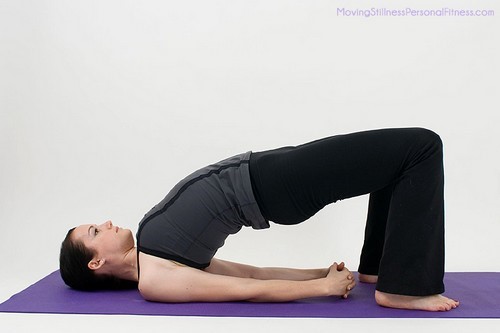 Setu Bandhasana
Setu Bandhasana
The position of the bridge or "Setu Bandhasana" is a simple posture aimed at the expansion of the chest and hips and revitalize the body.
How do you do it?
Lie down on the ground and bend your knees directly above the ankles to rise as it is.
Place your hands on your side with your palm down, press your feet firmly on the floor and lift the buttocks.
Rub your hands under your back, press your arms down, lift the body up, and your thighs parallel to the ground (depending on the degree of flexibility of the body).
Move your chest towards the cannula and then keep this situation for one minute.
To make it easier, put a set of pillows under your back.
Exercise 6: Triangle Pose
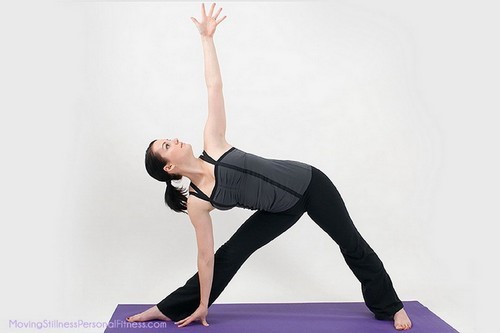 Trikonasana
Trikonasana
Trikonasana is a position designed to tighten the trunk and chest areas, giving greater breathing freedom.
How do you do it?
Spread your arms on both sides.
Stretch between your feet about 3 feet, then turn your left foot 90 degrees, and the right foot at a 45 degree angle.
Touch the ground with your right hand or lean on your right foot up or down your knee, and extend your left fingers firmly up.
Look at the ceiling and prove that position for five breaths (inspiration and exhalation).
Repeat the above with the sides switch.
Exercise 7: Seated Twist
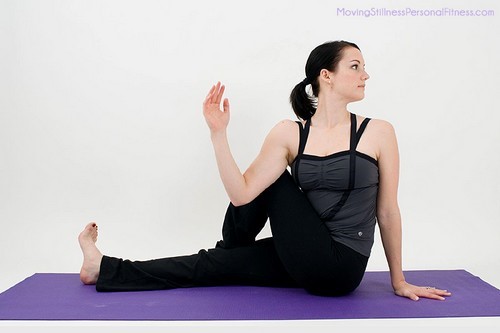 Seated Twist
Seated Twist
This position simplifies the hips, shoulders and back and improves blood circulation, as it works on the harmony of the abdominal area and the tightening of the external oblique muscle "obliques" is one of the muscles of the abdomen.
How do you do it?
Sit on the ground and your feet elongated.
Place your right foot to the left of your left thigh, then firmly bend your right knee.
Place your left elbow on the far right of your right knee, then place your right hand on the ground behind you with the individual's hands.
Turn to the right as far as you can, turn the rotation around the abdomen, keep the buttocks on the ground and keep this position for a minute.
Repeat the above with the sides switch.
To make it easier, keep the bottom of your foot straight / place both hands on your upper knee / sit on a folded cover (blanket, for example).
Exercise 8: Cobra pose
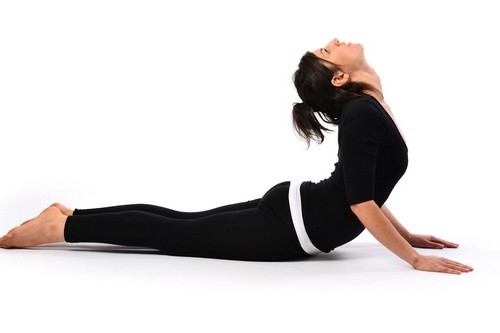 bhujangasana
bhujangasana
The position of cobra or "bhujangasana" is only a curvature of the back that extends the muscles of the front of the trunk and strengthens the arms and shoulders. The cobra position also warms the trunk area. This is an exercise from the sun salutation exercise group, but we start with yoga as one of its basics.Sun salutation exercisesSun salutation exercises
How do you do it?
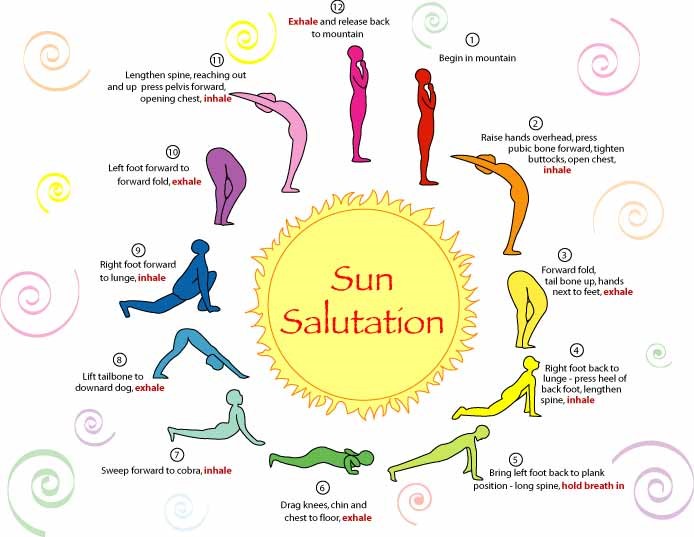 Lie down on your belly and then put your hands down your shoulders and fully spread your feet on the ground.
Lie down on your belly and then put your hands down your shoulders and fully spread your feet on the ground.
Press your shoulders down from the ears.
Press with your hands to land up with your chest up with the pelvic area tightening well, keep that position slightly.
Relax and then come back again.
Exercise 9 - Pigeon Pose
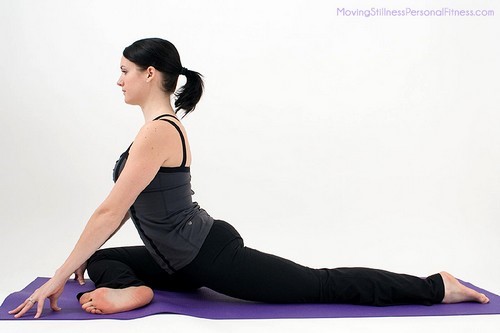 Eka Pada Rajakapotasana
Eka Pada Rajakapotasana
The position of the dove or "Eka Pada Rajakapotasana" is a position that activates the body and works to treat infertility. First start with the position of the mountain to tighten the body and give it the necessary flexibility.
How do you do it?
Bend your right foot in front of you as shown in the shape with your right heel placed next to your left hip as much as possible.
Spread your arms in front of you with your hands on the ground, then separate your left foot from behind you.
Fold your toes, and lift your chest up with a lower look.
Pull your tummy firmly into the inside and tighten the pelvic muscles well.
Repeat the above with the sides switch.
Exercise 10: Child's Pose
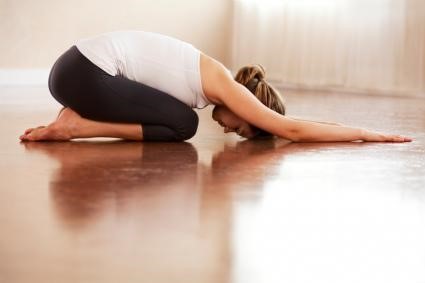 balasana
balasana
The position of the child or "balasana" is a position of bending forward, and gives a feeling of rest and recovery. You can do this exercise to gain flexibility in the lower back area, or to take a break while doing other exercises.
How do you do it?
Sit on the ground and bow your feet in front of your chest and your heel on the ground.
Move your body rotationally forward until it touches your ground.
Lower your chest until it touches your knees as much as possible, then extend your arms forward.
Prove this situation and breathe calmly.
These exercises are the simplest basic situations in which you can start in the world of yoga. Start yoga with these simple exercises to get your body flexible for the rest of the situation.
Source
WonderslistEvacuation responsibilaty
The article "Yoga for Beginners: The Top Ten Essential Exercises You Can Easily Work" does not necessarily reflect the opinion of the ARACEC editorial team. It is strictly prohibited to transfer any part of the Content in any form except after obtaining the written consent of the Administration.
 Yoga
is a general term referring to the physical, mental and spiritual
exercises that originated in ancient India with the aim of achieving a
state of lasting peace. There are many reasons to add yoga to your daily exercises. Vloga improves muscle strength and achieves flexibility and balance, as it helps to relax and reduce stress. Some studies have shown that yoga can reduce the symptoms of
depression, anxiety and chronic pain more than conventional therapy
alone.
Yoga
is a general term referring to the physical, mental and spiritual
exercises that originated in ancient India with the aim of achieving a
state of lasting peace. There are many reasons to add yoga to your daily exercises. Vloga improves muscle strength and achieves flexibility and balance, as it helps to relax and reduce stress. Some studies have shown that yoga can reduce the symptoms of
depression, anxiety and chronic pain more than conventional therapy
alone.So we offer you the top ten basic situations you start practicing yoga. And to know that their mastery helps to strengthen and stretch muscles and increase the flexibility of the body and improve the psychological and physical condition and avoid injuries during training.First Exercise: Mountain Pose
Exploring-a-Foundational-Yoga-Pose-Tadasana-Mountain-Pose
In Sanskrit (an ancient Indian language) claims "Tadasana", a situation in which mountains are simulated by being frozen and fixed. This is the main situation you should start with.
How do you do it?
Stand alone and relax your shoulders, distribute your weight evenly on your feet, leave your hands relaxed next to you.
Take a deep breath and lift your hands up with your hands facing each other
Lift your fingers as high as possible.
Exercise 2 - Downward Dog Status
 adho mukha svanasana
adho mukha svanasanaThe low status of the dog or "adho mukha svanasana" is one of the most famous yoga positions.
How do you do it?
Bend your body forward and lay your hands on the ground.
Move your hands forward so that you leave an appropriate distance between them and your feet - as shown in the figure - and then between the fingers of your hands, and press them firmly on the ground.
Fold your toes, then lift the buttocks up to form the body in the end as an inverted "v". Stretch shoulders from your ear.
Your feet should be slightly open and your knees slightly bent too.
Keep that position for three breaths - inspiration and exhalation - complete.
Exercise 3: Butterfly Mode
 Baddha-Konasana-joqfit
Baddha-Konasana-joqfitThis position is known as the "butterfly position" because the movement of the legs while sitting is like a butterfly when flapping its wings, also called "Badha konasana" which means "shoe maker status" because the shoe makers in India sit like that session while working.
Both feet should be folded close to the pelvic area, and the hands should be clamped tightly on the feet as if they were tied together.
Exercise 4: Warrior position
 Virabhadrasana
VirabhadrasanaThe initial warrior status or "Virabhadrasana" is the position of strength and concentration, and it aims to charge the body with the energy necessary for it.
How do you do it?
Stand on your feet and up between them at about 3 feet (30 cm). Turn your right foot 90 degrees and your left foot slightly.
Then lay your hand in front of you and the left behind you, with your palm down.
Keep your right knee up to 90 degrees. Keeping the position of the upper muscle directly, look at the extension of your right hand. Keep this position for one minute.
Repeat the above with the sides switch.
Exercise 5 - Bridge Pose
 Setu Bandhasana
Setu BandhasanaThe position of the bridge or "Setu Bandhasana" is a simple posture aimed at the expansion of the chest and hips and revitalize the body.
How do you do it?
Lie down on the ground and bend your knees directly above the ankles to rise as it is.
Place your hands on your side with your palm down, press your feet firmly on the floor and lift the buttocks.
Rub your hands under your back, press your arms down, lift the body up, and your thighs parallel to the ground (depending on the degree of flexibility of the body).
Move your chest towards the cannula and then keep this situation for one minute.
To make it easier, put a set of pillows under your back.
Exercise 6: Triangle Pose
 Trikonasana
TrikonasanaTrikonasana is a position designed to tighten the trunk and chest areas, giving greater breathing freedom.
How do you do it?
Spread your arms on both sides.
Stretch between your feet about 3 feet, then turn your left foot 90 degrees, and the right foot at a 45 degree angle.
Touch the ground with your right hand or lean on your right foot up or down your knee, and extend your left fingers firmly up.
Look at the ceiling and prove that position for five breaths (inspiration and exhalation).
Repeat the above with the sides switch.
Exercise 7: Seated Twist
 Seated Twist
Seated TwistThis position simplifies the hips, shoulders and back and improves blood circulation, as it works on the harmony of the abdominal area and the tightening of the external oblique muscle "obliques" is one of the muscles of the abdomen.
How do you do it?
Sit on the ground and your feet elongated.
Place your right foot to the left of your left thigh, then firmly bend your right knee.
Place your left elbow on the far right of your right knee, then place your right hand on the ground behind you with the individual's hands.
Turn to the right as far as you can, turn the rotation around the abdomen, keep the buttocks on the ground and keep this position for a minute.
Repeat the above with the sides switch.
To make it easier, keep the bottom of your foot straight / place both hands on your upper knee / sit on a folded cover (blanket, for example).
Exercise 8: Cobra pose
 bhujangasana
bhujangasanaThe position of cobra or "bhujangasana" is only a curvature of the back that extends the muscles of the front of the trunk and strengthens the arms and shoulders. The cobra position also warms the trunk area. This is an exercise from the sun salutation exercise group, but we start with yoga as one of its basics.Sun salutation exercisesSun salutation exercises
How do you do it?
 Lie down on your belly and then put your hands down your shoulders and fully spread your feet on the ground.
Lie down on your belly and then put your hands down your shoulders and fully spread your feet on the ground.Press your shoulders down from the ears.
Press with your hands to land up with your chest up with the pelvic area tightening well, keep that position slightly.
Relax and then come back again.
Exercise 9 - Pigeon Pose
 Eka Pada Rajakapotasana
Eka Pada RajakapotasanaThe position of the dove or "Eka Pada Rajakapotasana" is a position that activates the body and works to treat infertility. First start with the position of the mountain to tighten the body and give it the necessary flexibility.
How do you do it?
Bend your right foot in front of you as shown in the shape with your right heel placed next to your left hip as much as possible.
Spread your arms in front of you with your hands on the ground, then separate your left foot from behind you.
Fold your toes, and lift your chest up with a lower look.
Pull your tummy firmly into the inside and tighten the pelvic muscles well.
Repeat the above with the sides switch.
Exercise 10: Child's Pose
 balasana
balasanaThe position of the child or "balasana" is a position of bending forward, and gives a feeling of rest and recovery. You can do this exercise to gain flexibility in the lower back area, or to take a break while doing other exercises.
How do you do it?
Sit on the ground and bow your feet in front of your chest and your heel on the ground.
Move your body rotationally forward until it touches your ground.
Lower your chest until it touches your knees as much as possible, then extend your arms forward.
Prove this situation and breathe calmly.
These exercises are the simplest basic situations in which you can start in the world of yoga. Start yoga with these simple exercises to get your body flexible for the rest of the situation.
Source
WonderslistEvacuation responsibilaty
The article "Yoga for Beginners: The Top Ten Essential Exercises You Can Easily Work" does not necessarily reflect the opinion of the ARACEC editorial team. It is strictly prohibited to transfer any part of the Content in any form except after obtaining the written consent of the Administration.


Post a Comment